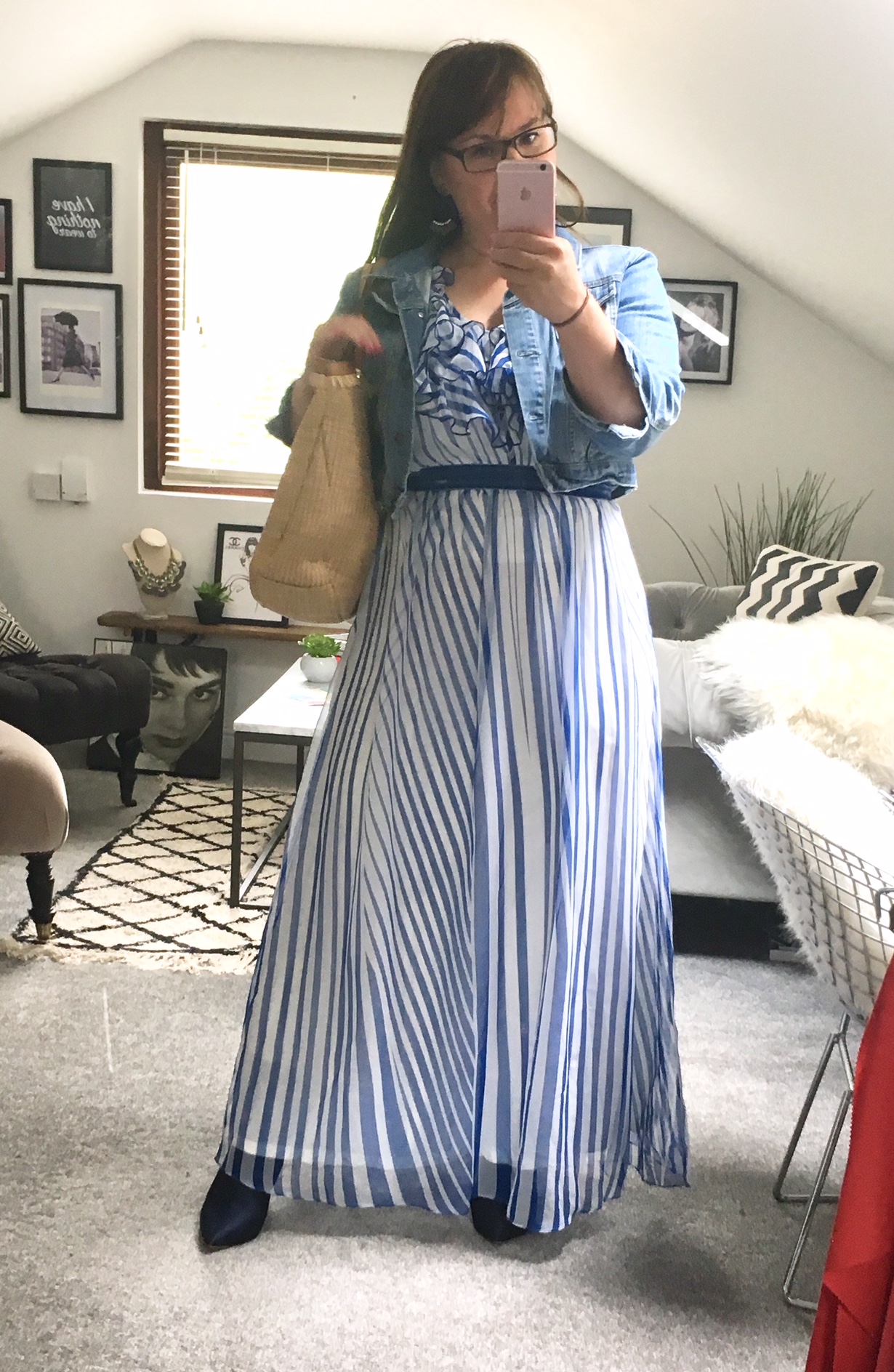Earlier this month I attended the Going Green 2019 summit which had some brilliant speakers and ideas on how to be more ‘green’ - including what you wear. This got me thinking about small but effective changes we can all make to our everyday lives which can have a big impact on our planet. So here’s my top 6 tips on how your can be more eco with you clothes without much effort at all.
1/ Look after what you already have.
Simple as it sounds, cherishing what you already own can have a huge impact. This is because WRAP research has shown that increasing the active life of your clothing by just nine months would reduce the annual carbon, water and waste footprints of UK clothing by 20-30% each, and cut resource costs by £5 billion!
As if she read my mind, my friend Robyn posted how she spruced up a leather jacket with a brilliant eco product by Forest Hog . There’s definitely more than 9 months usage left there now!
Just look at the before and after photos: ️
2/ Buy as much as you can from second hand sources first.
There are so many pre-loved clothes in circulation and many ways to access them at a whole range of price points. This means there must be something for everyone! A few months ago I found a beautiful dress in the vintage section of St Peters Hospice, Westbury Hill. I can’t vouch for how old it is but I do know that it’s been hand made and I love the fact that at some stage somebody has put some considerable love into making it.
It all would have taken time and effort so I’m really pleased to be able to give it a new home. I’ve no idea who wore it first time around or for what occasion, but I’m just happy it’s now in my possession and I will love it for the foreseeable future.
3/ Get to know your fabrics.
When I first began my journey into understanding how to have a more sustainable wardrobe, I believed that natural fibres (cotton, linen, wool, cashmere, jute, hemp, silk etc.) were by far the best as they biodegraded easily and they didn’t leak plastic microfibres into our waterways unlike polyester and acrylic.
Then I learnt how much water cotton crops take - even organic cotton crops are heavy on water consumption. I also learnt how silk, leather and wool are not acceptable to those clients living a vegan lifestyle. There were many many other factors to consider too - it’s truly a case of the more I learn, the more complicated it becomes!
So I had to start seeking out alternatives to suit everyone and that meant really getting to grips with different types of fabrics.
I’m going to do blog soon on alternative fabrics as it’s such an enormous topic but I just wanted to share that although the following fibres are man made, they actually come from plant cellulose rather than oil or plastic and DO biodegrade over time:
- bamboo
- lyocell (from eucalyptus trees)
- modal (from beech trees)
- rayon/viscose (from wood pulp)
- vegan leathers (pineapple, apple, mushroom etc)
Also to bust a common myth, there’s PU (polyurethane) as a vegan alternative to leather. It does not require the same chemical plasticisers as PVC (polyvinylchloride) which it often gets confused with and will eventually degrade over time whereas PVC won’t.
4/ Get to know your OWN personal style.
Take some time to figure out what you like to wear, what shapes and colours work well on your body and what feels like ‘you’ when you’ve got it on. The more you know your style, the more likely you are to buy the right pieces and this means a number of things:
You won’t be swayed by the latest trends (which seem to hit the shop floors on a weekly basis) and be tempted to over-consume
You will love your clothes more and therefore look after them for longer
You will wear more of what’s in your wardrobe and find it easier to create outfits
You will find it quicker to make decisions on pieces because you can see whether it expresses your identity or not
You will make less impulse purchases (you know...like when you didn’t really need anything but you found an absolute bargain in the sales that you intend to fit into when you’ve lost that weight....
And lastly, other people can easily find things for you!
This dress is a case in point. The fab manager of the Cats Protection shop on the Gloucester Road showed me this dress as soon as I walked into his shop. He’d correctly identified it as something I’d wear so not only does it help you find pieces, it makes it easier for others too!
5/ Use your voice and collaborate with others to create more impact and bring about positive change.
In particular I’d like to draw your attention to the work Polly Higgins carried out before her recent death to try to raise awareness of and pass a law on ecocide. Her campaign is that ecocide should be recognised as a crime. If you’re wondering what ecocide is, it’s
“extensive damage to, destruction of or loss of ecosystems of a given territory, whether by human or other causes, to such an extent that peaceful enjoyment by the inhabitants of that territory has been or will be severely diminished”
She sold her house and gave up a high-paying job so she could dedicate herself to attempt to create a law that would make corporate executives and government ministers criminally liable for the damage they do to ecosystems.
Just imagine that.
The CEO of a clothing factory for example, could be found guilty of a criminal offence if their factory damaged their local ecosystem. I’m pretty sure it would result in some radical and swift changes to the way the clothing industry worked.
If you’d like to find out more, or learn how you can take action, please visit www.stopecocide.earth
6/ Re-think how you wash your clothes.
This is because an estimated 50% of the greenhouse gas emissions from clothing takes place in the consumer use stage. This means we have huge control over the environmental impact we have so here are my 5 super easy tips and tricks for washing and drying clothes in a more environmentally friendly way.
If you have clothes made with polyester or plastic based textiles like a lot of my 1970’s vintage dresses and pretty much all the kids sports kits, each time you wash them they release microfibres into the water system. Greenpeace estimates that 30% of ocean plastic pollution comes from microplastics with an estimated 35% of these coming from synthetic clothing and other fabrics. To prevent this, pop them in a Guppy Friend Bag when you wash them and the bag will catch all the nasty microfibres for you.
Washing by hand is good for the environment but with the amount of clothes my family gets through it just isn’t practical for me. However, I do wash at cooler temperatures and just by turning down your washing machine from 40°C to 30°C will save 100 grams of CO2 per load as well as being gentler on your clothes
Something really easy to do is to change from a regular detergent to a natural detergent. So many eco and zero waste shops now sell them and they are usually refillable so it’s a win win as well as being gentle on your skin.
To reduce your footprint (and therefore your energy bills!) hang-dry your clothes whenever possible. I know it can be a challenge in our climate so if you can’t always hang your clothes outside, get an indoor clothes dryer and watch your clothes last longer than being tumble dried.
Lastly, wash your clothes less. Probably because we all have machines there’s a tendency to toss everything into the laundry basket regardless of how dirty it actually is. There is a downside to this though.....in my case there’s an eternal pile of clothes on the chest that are too dirty to put back in the wardrobe but too clean to put in the wash!
Phew…that was a long one, but worth a read and even if you just make a couple of changes, the cumulative effects all add up!




